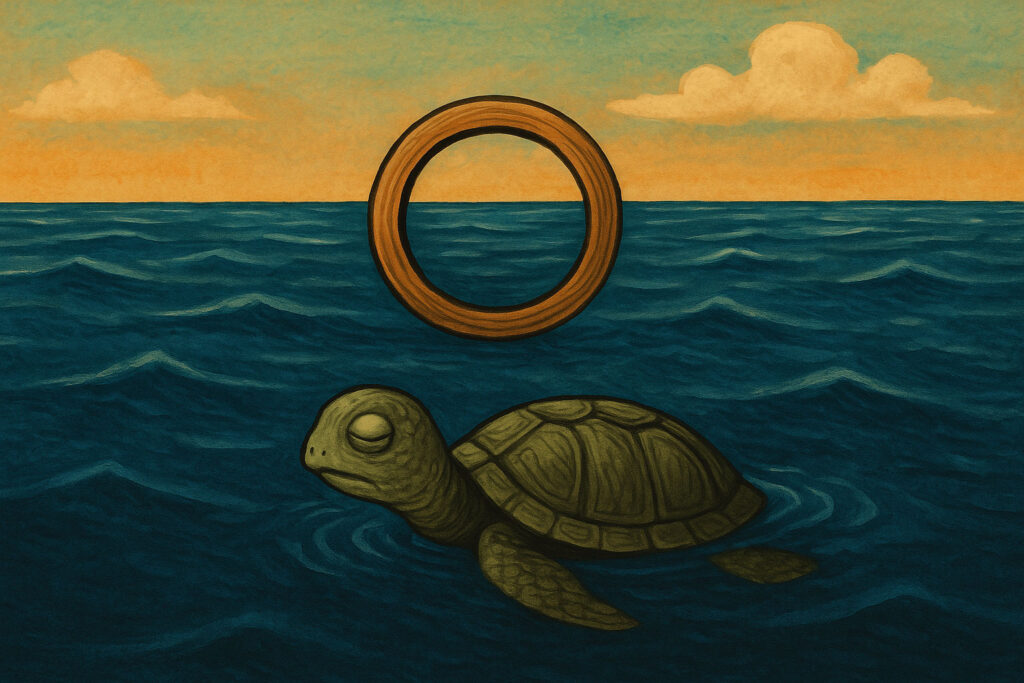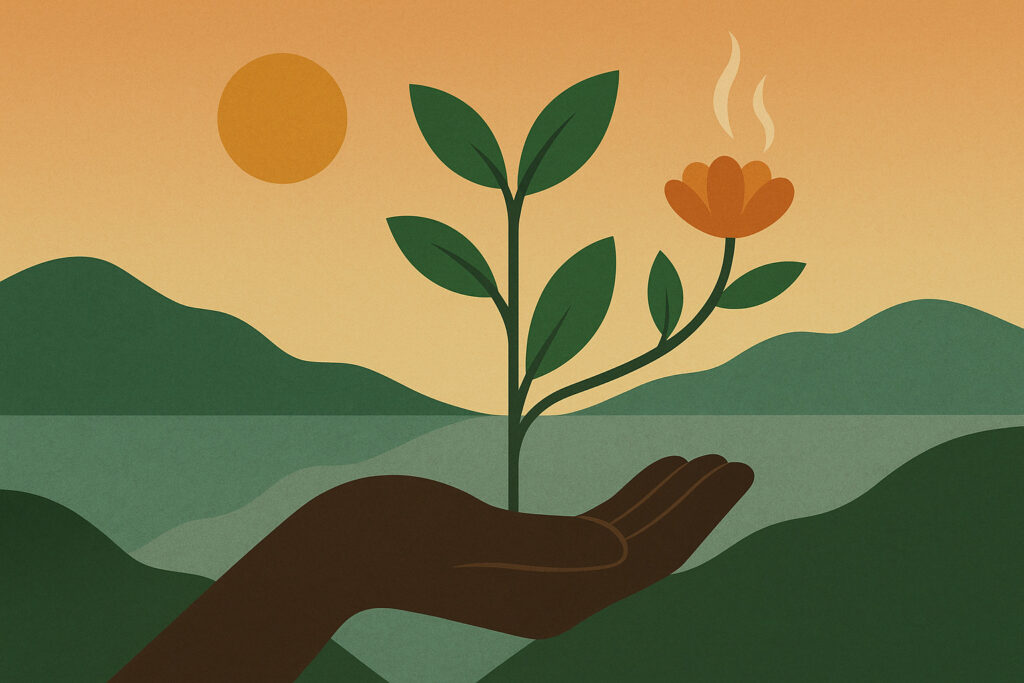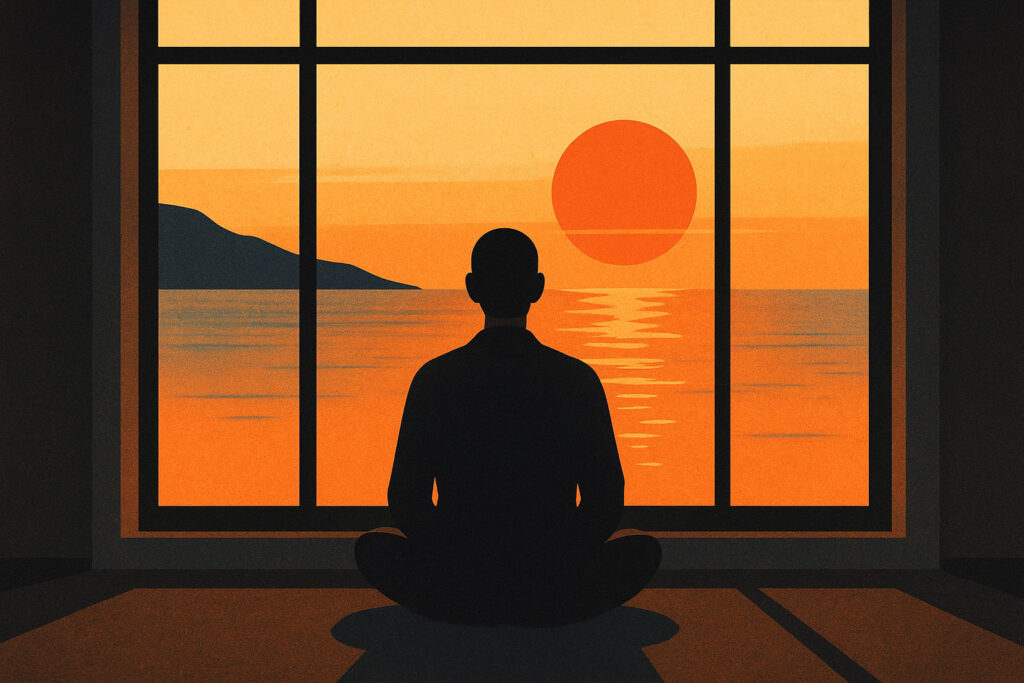
Breathing Your Way Back Home
A Buddhist parable of a blind turtle inspires reflection on life’s rarity, balancing samsara’s struggles with presence and spiritual homecoming.

This week I’ve been sitting with the words hope and optimism. Until yesterday, if you had asked me to define them clearly, I probably would have stumbled through a few approximations. I could have told you what they felt like to me, but I wouldn’t have been able to give you anything precise. After exploring their origins and reflecting on how they live in my own experience, I feel a much deeper connection to them now than I did before.
This became especially clear after Kathleen meet with her longtime oncologist, Dr. Amy Jo Chien at UCSF last week. Dr. Chien is one of the world’s leading metastatic breast cancer oncologists and Kathleen has now embraced the importance of seeing her in person every six months. Their first face-to-face meeting last week was profoundly uplifting. Dr. Chien gave her tangible insights that stripped away layers of uncertainty and replaced them with something sturdier: hope and optimism.
Here’s how I’ve come to see the relationship between the two. Hope is the seed, the mother state. Optimism is the branch it grows into. According to Merriam-Webster, hope is the expectation of fulfillment or success. To have hope is to incline yourself toward something not yet realized. Even in its etymology this is true: the word traces back to the Proto-Indo-European root keup (4,000–6,000 years ago), meaning “to bend, curve, or incline.” From the very beginning, hope has carried in its DNA the idea of leaning toward something—ultimately, toward the good. By Middle English, hope had become synonymous with trusting in a brighter future. It is, as I see it, one of the most important nuclear reactors producing energy for human existence.
Optimism, on the other hand, has younger roots. Derived from the Latin optimus (“the best”), it first entered English in the 1730s. It describes the mindset that the future can be better, that effort leads to favorable results. If hope is the seed, optimism is the flowering. Hope provides the expectation; optimism becomes the attitude. One is foundational, the other an orientation of the mind.
I think of hope as a cognitive-emotional state that straddles thought, feeling, and action: expectation fused with emotional uplift and motivational energy. Optimism emerges as the posture that rides on this foundation. To me, optimism without hope feels shallow, but hope almost always spills naturally into optimism.
When Kathleen asked me recently, “Have you always thought of yourself as an optimistic person?” Without hesitation I said, “Always!” No matter how rough the seas, optimism has been my sail and my rudder. Hope has been the current beneath it. I don’t take that for granted—it feels like a gift I was born with. But what about those who struggle? What if someone asks, “How can I cultivate hope and optimism when the world feels overwhelming?”
I don’t believe there’s a single secret. I realize it can appear to be difficult or elusive. The very circumstances we are born into can shape our sense of hope. But I do believe that hope can be nurtured in countless ways: through spiritual practice, through relationships, through creative work, through devotion to health and fitness. At the root, it comes down to daily rhythms—habits, rituals, routines. Chop wood. Carry water. Rinse and repeat. This consistency lays the foundation for hope, and hope in turn gives rise to optimism. It creates a pattern for predictable results and positive outcomes. Hope and optimism are cultivated in the stability of ritual and routine which then lays a path for a future that is well-lit and clear.
The poet Emily Dickinson once wrote:
“Hope is the thing with feathers
That perches in the soul,
And sings the tune without the words,
And never stops at all.”
Her image captures what I’ve been circling around: hope as something both fragile and indestructible, a presence within us that insists on forward motion. Optimism, then, is how we choose to sing along with that bird—how we shape our actions in the light of what hope makes possible.
Meditation: On a slow ten-count breath, consider your relationship to hope and optimism. How do these qualities show up in your daily or weekly life? How do you cultivate them? And what practices might bend you toward them more fully in the days to come?

A Buddhist parable of a blind turtle inspires reflection on life’s rarity, balancing samsara’s struggles with presence and spiritual homecoming.

Pablo Neruda’s “Keeping Quiet” teaches stillness amid chaos, reminding us that silence, breath, and presence restore peace and balance.

Inspired by Rory McIlroy’s Masters win and local golf struggles, this meditation explores resilience, nerves, and the courage to persevere.